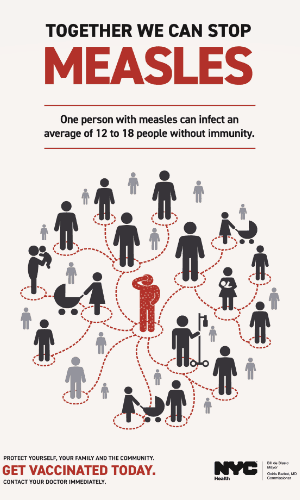
Jewish Marketing Of Health & Wellness
How to properly market health and wellness offerings to the Jewish audience and potential missteps to avoid.
Regarding health and wellness offerings, rationales for a focus on marketing to the Jewish segment vary quite broadly. Motivations include both those that are novel as well as some more mundane reasoning. Likewise, some offerings have a specific application for the Jewish audience, while for others, the application is more general, but the Jewish market presents significant potential for some other reason.
In addition to elements innate to a specific health-focused product or service offering, which dictates market relevance, the Jewish audience’s characteristics play a factor in driving marketers’ interest. The common theme is that when properly advertised, we see a strong response from the targeted Jewish audience. We believe this positive response is largely due to the higher-than-average wealth profiles that allow for more significant discretionary spending on health and wellness offerings that are not strictly necessary per se. Also, we view the enthusiasm as being intertwined with present-day Jewish culture stressing a conscious awareness of healthfulness. Additionally, realities (discussed below) present among various segments of the broader Jewish population that make specific health issues more prevalent and hence, relevant than other ethnic groups. [efn_note]
Far from the only ethnic group, though, that is affected by certain genetic diseases at higher rates. Read more here.
[/efn_note]
This discussion reviews some of the more novel health-related campaigns that specifically centered on the Jewish audience, which we have either worked on or encountered through our Jewish health marketing practice, SquaredHealth. We also discuss the motivation behind some of these marketing plays. Lastly, we analyze strategic ways to effectively and efficiently market similar offerings and avoid some of the more common pitfalls. In particular, we stress the importance of strategically navigating the sensitive nature of some campaigns.
Genetics Focused Offerings
When it comes to progress relating to improvement in the human condition, the vast amount of research over previous decades in the field of genetics has moved the needle in monumental ways. For example, the decoding of the human genome has made for a much better understanding of disease epidemiology as well as the development of effective treatment regimens.
Advances in genetics have also paved the way for a variety of related direct-to-consumer products to be made available at an affordable and attainable scale. The proliferation of these kinds of products ranges from generalized tests that show disease carrier information and the more recreational kind that provide insight into one’s ancestral history. On both these fronts, though, we see keen interest from various Jewish audiences.
As seems par for the course of transformative technologies, the popularity of genetic testing has spurred heated discussion covering a broad range of concerns. These include privacy issues and the fear that genetic markers may be used to classify individuals based on their intelligence and scholastic ability. Yet, at the same time, when discussing genetics in the Jewish-centric marketing context, some realities make genetic testing a welcome advancement.
Based on the traditions and a relatively genetically homogeneous population, both when it comes to Jews of European origin (Ashekanzi) and Middle Eastern Jews (Sephardic), there is a higher prevalence of certain diseases. This reality, in some sense, caused an inevitable innuendo. For example, before the widespread availability and subsequent use of genetic testing to ensure that a couple was not carriers of certain high-risk diseases, Tay-Sachs became synonymous with the Ashkenazi Jewish population. Thankfully, through advocacy, such as by the Jewish Genetic Disease Consortium (JGDC) and other public awareness campaigns, the rate of Jewish couples embarking on genetic testing before deciding to have children is much more common now. As a result, many of these once more frequently occurring diseases are much less prevalent. This awareness has made genetics and related testing of particular interest to the Jewish audience, and those with relevant offerings benefit from this.
There is an ever-expanding landscape of companies providing genetic testing. Some focus more on the health-specific side and some recreational aspects relating to family history and origins. We see a strong potential and corresponding response to both of these kinds of offerings. The companies that capitalize on this opportunity best specifically cater to the Jewish audience in terms of relevant messaging that stresses their offer’s value.
On the health-specific side, there are non-profit organizations that focus on the genetic testing needs of the Jewish community. JScreen, in partnership with Emory University School of Medicine, has embarked on an ambitious project to ensure the diminishment of diseases that are genetic in origin through proactive testing.
Join us in conversation with @SawYouAtSinai #matchmaker @LoriSalkin
— JScreen (@MyJScreen) August 4, 2020
#tubav #love #marriage #dating pic.twitter.com/sPjEBjBmbP
JScreen has navigated accomplishing its public health goals through a variety of partnerships, including with life science and pharmaceutical companies, and very targeted traditional and native style advertising. For example, they sponsor Soon By You, a popular Jewish dating comedic web series. More niche genetic testing organizations, such as Dor Yeshorim, focus primarily on the Orthodox Jewish population.
There are also for-profit entities offering genetic testing, primarily geared toward newlyweds.
When it comes to the recreational side of testing, MyHeritage DNA stands out from some of the other players in the space by trying to market deliberately to the Jewish audience. Part of this focus may be because MyHeritage DNA is a company founded and based in Israel. Beyond just digital ads with Jewish-specific messaging, they also have content pages built out to address topics centered around Jewish genetics. With that said, other large players such as 23andMe and Ancestry have Jewish-specific content that helps to garner interest from the broader Jewish audience.
We believe that to appropriately capitalize on the Jewish audience’s enthusiasm for genetics-based offerings, a combination of data-backed targeting, messaging, and content is the hat trick of success. Also, addressing the concerns, questions, and sensitivities surrounding this still dynamic sector should also play a prominent role in any Jewish-centric marketing campaign. Taking community insights into account through qualitative and quantitative methods, including social listening and customer feedback, is vital to forming a marketing strategy that capitalizes on this market segment.

Pharmaceuticals & The Life Sciences
As medicine progresses toward a more personalized and individually tailored approach, in large part due to a greater understanding of genetics, we see a rise in various pharmaceuticals directed toward the Jewish audience. Many of these treatments address diseases that affect the Jewish population at a higher rate than the average population. For example, Gaucher disease, the most common genetic disease affecting Jews with ancestry from Eastern Europe, is one such scenario. Pharma companies offering Gaucher treatments have the motivation to focus on the Ashkenazi population as they are a very relevant and concentrated market.
When it comes to the marketing of pharmaceutical offerings, we suggest taking a multi-pronged approach.
The first area of focus revolves around a variety of targeted digital advertising. Such advertising can take the form of interest-based targeting on Facebook geared toward those displaying concern relating to a specific disease. Additionally, marketing toward search intent for relevant keywords is also an area of high potential. For example, those searching for “Gaucher Disease Symptoms” would see an ad in search that directs the individual toward helpful and relevant content, answering their questions and providing for the next steps.
It is important to note that there are best practices that need implementation with targeted digital advertising campaigns, and accounting for HIPAA-related compliance concerns is crucial. We discuss some of the relevant issues and ways to stay compliant further on in this discussion.
The second core area of focus for pharma and related offering in a Jewish marketing context relates to native marketing. This form of marketing can take on various structures, such as influencer marketing on Instagram or a long-form advertorial in a Jewish magazine. The goal of these native-style campaigns can be multi-faceted and include raising general awareness for a disease, treatment options and providing for a direct call to action.
The final area is more of a catch-all basket that includes various marketing platforms and strategies holding strong potential. The basket ranges to include traditional print and out-of-home advertising in highly trafficked Jewish neighborhoods. Community-based events, either in person or via a webinar that offer insights from subject matter experts in conjunction with a well-executed awareness campaign, are also a proven avenue toward successfully achieving successful patient recruitment campaigns.
Orchestrating A Seamless Patient Journey
We view the patient recruitment journey in the context of marketing healthcare offerings and, specifically, pharmaceuticals as an area that requires added attention. There should be a focus to ensure that the path from initial awareness to interest and contact is as seamless and straightforward as possible. Formulation of a frictionless patient recruitment journey pays great dividends down the road.
Dictation of the steps for optimizing the patient journey depends on the specifics of the offering and campaign in question. Therefore, depending on the platforms utilized and the Jewish segment being focused on, the recruitment journey may deviate. For example, advertising shown on digital platforms geared toward a younger demographic would do well to include a traditional funnel and strategic drip email campaign. On the other hand, ads in print targeting a more religious and less technologically infused population segment may direct individuals to call a phone number. The goal, though, in either scenario, is for the intended action to be as clear as possible and easy to perform. Furthermore, steps to maximize both the proper capture of initial interest and cultivating and fostering next steps help achieve campaign goals better.
HIPAA Concerns
When undertaking campaigns that fall under the purview of the Health Insurance Portability Accountability Act (HIPAA), it is essential to ensure compliance on the part of both the covered entity (healthcare organization) and business associates, which in the marketing context is usually an advertising firm. Though the obligations under HIPAA are broad-ranging and the specifics are beyond this discussion’s scope, it has to be front and center for marketing campaigns relating to offerings that need to be HIPAA compliant. Internet advertising giants like Facebook and Google also have restrictions on sensitive advertising that include some health offerings. For example, retargeting is restricted to ensure that personal privacy is protected.
Public Health Awareness Campaigns

Measles outbreaks in specific Jewish communities are currently on the rise. The increase in cases stems from a choice by parents in some instances to not vaccinate for the disease. In response, there has been a lot of news coverage, heated debate, and laws passed to address what has been deemed by officials to be a health crisis. We have also seen a concerted effort by government agencies, including the New York City Department of Health to raise awareness about the dangers of not vaccinating children against diseases such as measles.

While the reasons for not vaccinating are myriad and beyond this discussion’s scope, a combination of advertising targeted to the affected communities and in-depth native content is a marketing regimen that we believe effectively raises awareness and drives intended public health outcomes.


Few areas encompass more sensitivity than one’s health. Combine health with religious or ethnic background, and the need for tact and balance is in multiples. The necessity for attention to subtlety is especially necessary when trying to market for a profit. With that said, even when sensitive matters need to be discussed for marketing, as long as a sincere and informed narrative is at the fore, avoiding pitfalls and negative feedback is quite achievable. With that said, it is still essential to be aware of community concerns, listen to feedback, and take it into account to calibrate marketing strategy.
An Exciting & Growing Category
Besides genetics, pharmaceuticals, and health awareness campaigns, we see many other applications for marketing health and wellness offerings to the Jewish audience. They range across the spectrum from personal products to special edition kosher-certified baby formula. These are just some of the companies that identified an opportunity in the Jewish market and capitalized on it. As more health and wellness-centered companies see the opportunities present in the Jewish market for their offerings and perhaps the strong returns some of their peers are getting, the greater attention this small yet potentially lucrative market segment will get.
We expect this to be an exciting and growing category and look forward to seeing the introduction of other unique offerings to the Jewish ecosystem.

